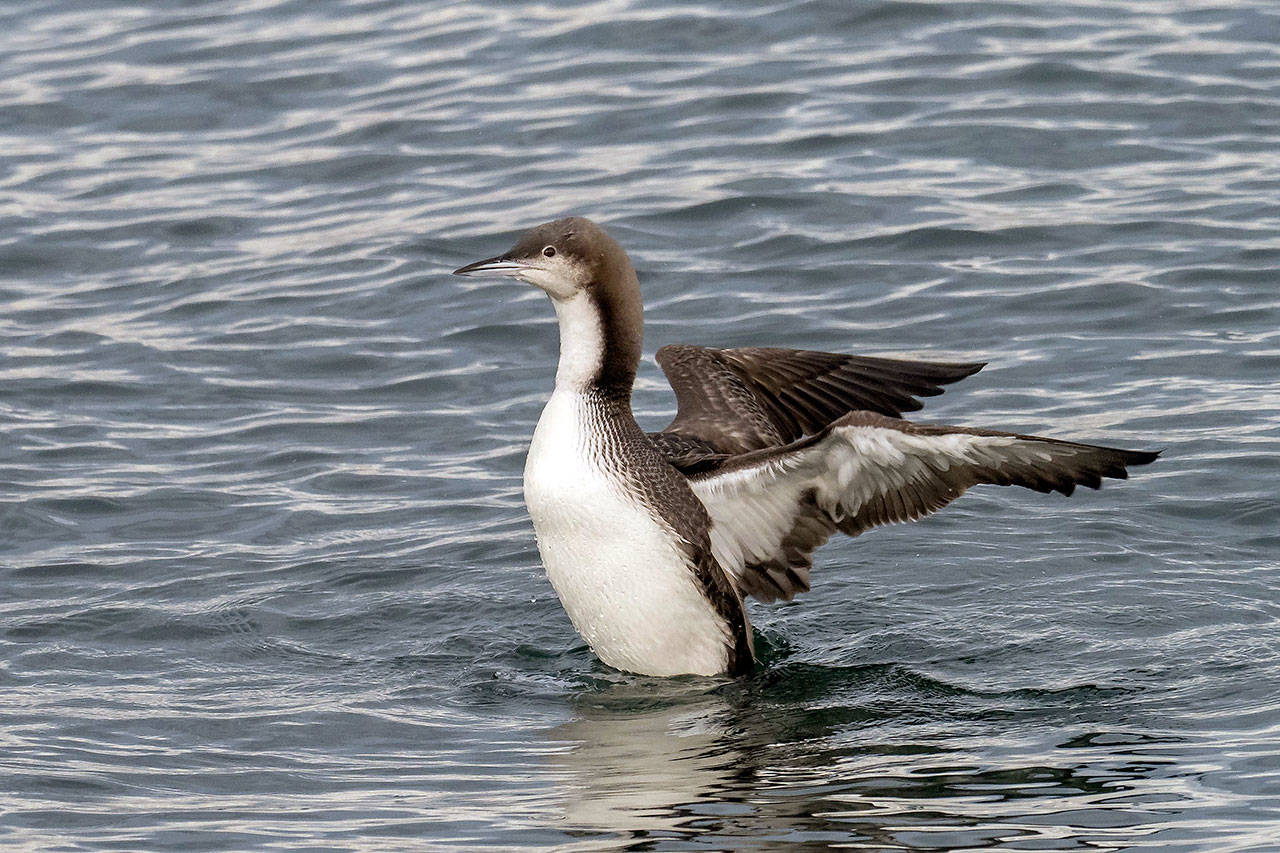By Dianna Moore
Grays Harbor Audubon
This is a bird I confess I have never really positively identified as a bird I have seen, so it remains for a future sighting…perhaps soon. That is one of the reasons I featured it in today’s article. I always look forward to doing a piece on a bird not previously seen by me in hopes it will stimulate me to get out and look for it, the same response I hope for with all of you reading this. With our spring weather beckoning us to go outside, now is your chance.
General Description: Pacific Loons are a large water bird with a long body, straight dagger-like bill, all white chin, throat, breast and belly, and dark back and sides. Both immature and non-breeding birds have a darker chinstrap, but it can be difficult to see. Breeding plumage birds develop a pale gray neck and head with vertical black and white stripes on neck and thick white stripes on the back. Both sexes are 23 to 30 inches in length, with 43 to 50 inch wingspans, and weighing approximately 35 to 88 ounces.
Habitat: Most Pacific Loons spend the winter on open water, farther offshore than other loons. They can also be found on bays and estuaries and along the coast except during the breeding season when they are found on large, deep tundra lakes in the far north.
Behavior: Pacific Loons are the most gregarious of the loons and when food is abundant they can be found in flocks numbering in the thousands. They swim with their heads in the water, searching for prey before diving to capture it. During the breeding season they will aggressively defend their breeding territory.
Diet: Depending on the season, small fish are their choice for food on the ocean, mostly in the winter. During other times of the year they also eat crustaceans, insects and other aquatic creatures.
Nesting: Both sexes build a nest on shore near the water, on an island or even floating on the water. Often a large pile of grasses including some mud and lined with softer plant material. Both sexes incubate one or two eggs for 24 to 30 days. Shortly after hatching the young are ready to leave the nest for foraging but will return to the nest for a few more nights. Both parents continue to feed the young and watch over them until they are ready to fledge.
Migration: There isn’t a lot of information on the life of these loons as they are usually found in remote locations in both their breeding territory and off-season. They are found down the length of the west coast to Mexico. They head for their breeding territory in late May and return south in September. Migrants are thought to travel in large flocks just offshore but can also be found traveling inland, hopscotching from one inland body of water to the next on their way.
Conservation Status: Loons are subject to offshore pollution on coastal waters, and in their breeding grounds they can be vulnerable to destruction of habitat.
When and Where to Find on Grays Harbor: Best times to see this bird in our area is September through June. If you can take a pelagic trip out of Westport I highly recommend it (be sure to take your sea-sickness remedy if you even think you might get sick). If not, try the jetties in Westport or Ocean Shores, or out on Damon Point. Look for them in the harbor off the marinas too. Better yet, find a friend who can help you spot this visitor, and enjoy the day.


